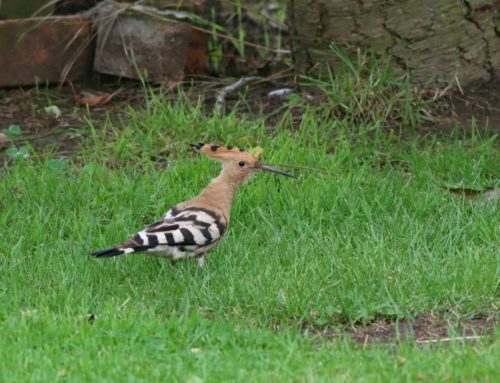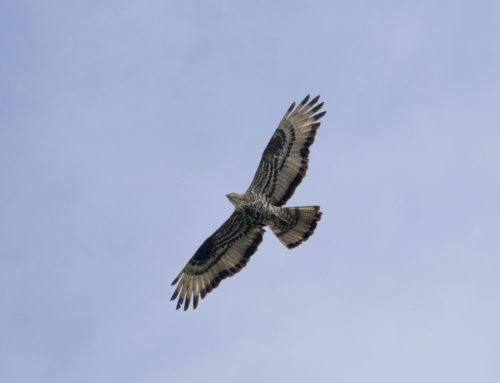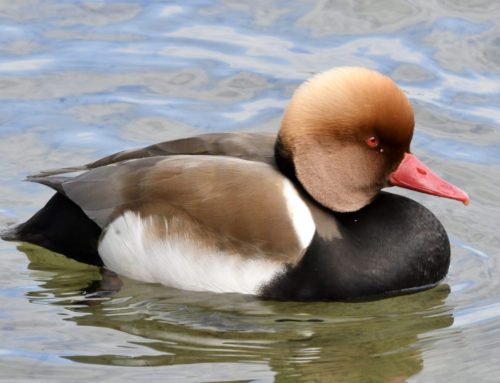Birds of Conservation Concern 5: rare breeding birds

The latest Birds of Conservation Concern assessment, the fifth to date, was published today, 1st December 2021. Produced by a consortium of conservation organisations including the RSPB, BTO, Game and Wildlife Conservation Trust and the five statutory nature conservation bodies, this exercise has drawn on the best available monitoring data to assess the status of all the UK’s regularly occurring birds against a set of standardised criteria. This robust, data-driven process results in each species being assigned to one of three colour-coded lists: Red, indicating the highest conservation concern, Amber, indicating moderate concern, and Green, for the species of lowest concern.
In a nutshell, Red-listed species are those which are threatened globally, are severely depleted from historical levels, and/or have declined in numbers or range severely in the UK more recently. Species can be Amber-listed for a broader range of reasons, including threat status in Europe, moderately decline, rarity, localisation, and the international importance of the UK population. Note that species can be assessed for their wintering and passage populations, as well as breeding populations – the final listing for a species is the colour of highest concern from all the assessments made. The full details of this process, including the data used and the criteria, can be found in the paper available open access in the journal British Birds – a summary of the lists themselves is also available.

Willow Tit (Mark Eaton)

Arctic Skua (Ian Francis)

Turtle Dove (Ben Andrews, RSPB Images)
Data provided by the Rare Breeding Birds Panel play a crucial role in BoCC assessments (and indeed, three Panel members were involved in this latest assessment and are authors on the BB paper). We provided up-to-date trends for many species (those for which annual totals reported by the RBBP are felt to be representative of the actual population), and new population estimates were also derived from these totals. Species with breeding populations of fewer than 300 pairs are Amber-listed, so this includes many of the species that the RBBP reports upon. Furthermore, many of the UK’s rare breeding bird species are threatened at a global scale, are severely depleted from historical levels, or have undergone rapid declines in recent decades, so a considerable number are Red-listed.
There are now 27 regularly-breeding ‘RBBP species’ on the BoCC5 Red list – see the table below. Of these, 24 are Red-listed due to factors related to their UK breeding populations. The remaining three are Red-listed due to declining wintering populations (Goldeneye and Red-necked Grebe) or threat on a global scale (Pochard, which is listed as Vulnerable to extinction on the Global IUCN Red List, but for which the small UK breeding population has increased in recent decades).
Capercaillie
Common Scoter
Goldeneye
Pochard
Red-necked Grebe
Slavonian Grebe
Turtle dove
Corncrake
Dotterel
Whimbrel
Black-tailed Godwit
Ruff
Purple Sandpiper
Red-necked Phalarope
Roseate Tern
Arctic Skua
Hen Harrier
Montagu’s Harrier
Lesser Spotted Woodpecker
Merlin
Red-backed Shrike
Willow Tit
Marsh Warbler
Savi’s Warbler
Fieldfare
Hawfinch
Cirl Bunting
Newly Red-listed species are shown in italics. Two RBBP species have moved onto the Red list due to declines in their breeding populations, and both are hanging on in the UK by a thread; only single pairs of Purple Sandpiper and Montagu’s Harrier were reported in 2019 (see the summary of our 2019 report here). A number of others, such as Turtle Dove, Arctic Skua and Willow Tit, can be counted as amongst the UK’s fastest declining species.
Furthermore, one RBBP species has now been moved off the Red list onto the list of ‘former breeders’ i.e. is regarded as extinct as a breeding bird in the UK, at least currently. While singing Golden Orioles are still reported from time to time (there were records of two singing male birds in our 2019 report), there has not been a confirmed breeding attempt in the UK since they ceased breeding at their last regular breeding site, RSPB Lakenheath in Suffolk, after 2009. Golden Oriole follows in the footsteps of Temminck’s Stint, Wryneck and Serin, all of which were moved to the former breeders list in the BoCC4 review in 2015.

White-tailed Eagle, Fife (Ian Francis)
Whilst the trend between BoCC assessments continues to be bad news – overall, the Red list increased to 70 species in BoCC5 – there are a few glimmers of hope. In particular, a few species moved from Red to Amber, including three rare breeding birds. In the case of Black Redstart and Redwing this is due to upturns in recent years which may just be part of the population fluctuations both species appear to undertake. For White-tailed Eagle, however, the move to the Amber list is the result of a sustained population recovery since the reintroduction in Scotland from 1975 onwards. Since the first successful breeding in 1985, the population has steadily increased and spread, with 123 territories reported to the RBBP for 2019; a clear demonstration that well-targeted, informed and resourced conservation action can deliver success. Indeed, a number of still Red-listed species, including Roseate Tern, Corncrake and Cirl Bunting, have shown recent recoveries in response to targeted conservation action, so we can hope that they and others might be able to move to the Amber list in future assessments.
Birds of Conservation Concern assessments are a keystone of bird conservation efforts in the UK; they are credible, scientifically-robust and widely-endorsed exercises that provide an update of how our birds are doing as a whole, and enable those species that most need conservation help to be identified. That RBBP data are so crucial to these assessments underlines the value of our work, and moreover the efforts of the thousands of volunteer observers who collect data on rare breeding birds and those who collate this data on the Panel’s behalf. Thanks, and keep it up!






